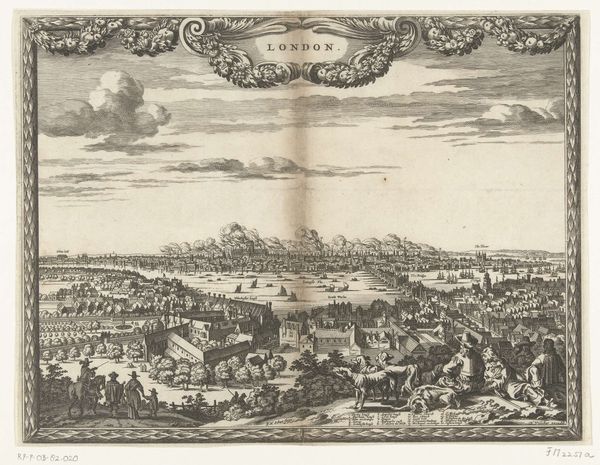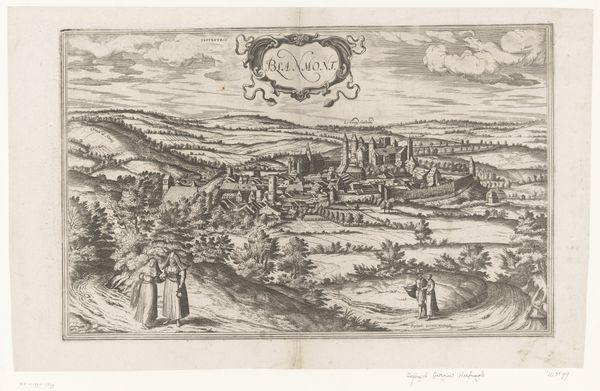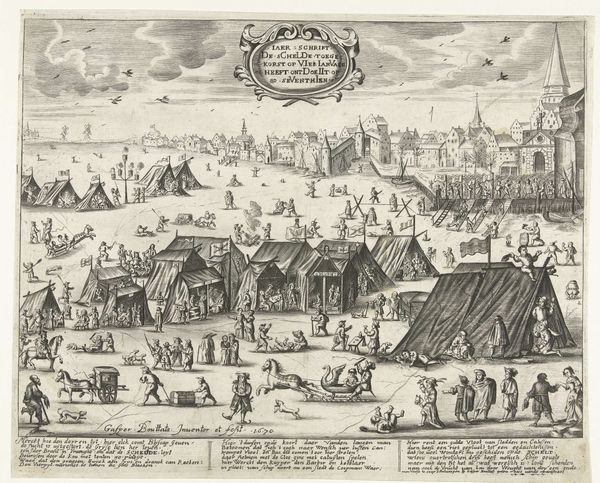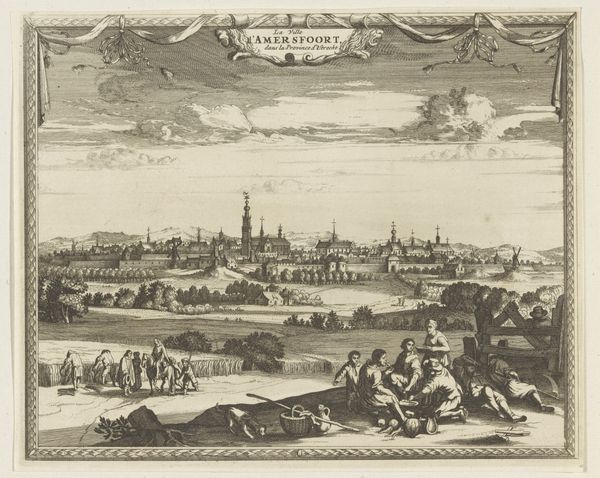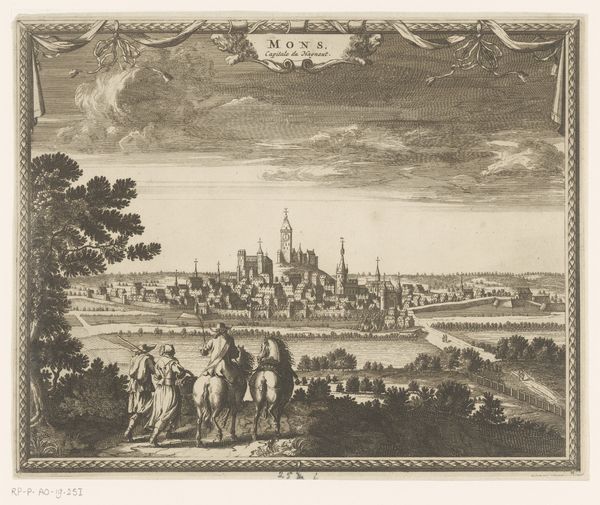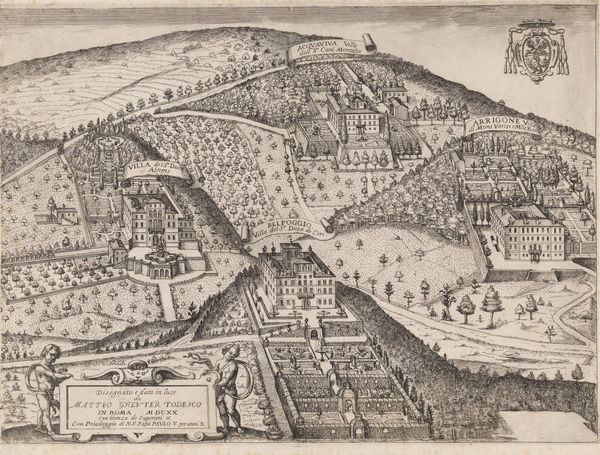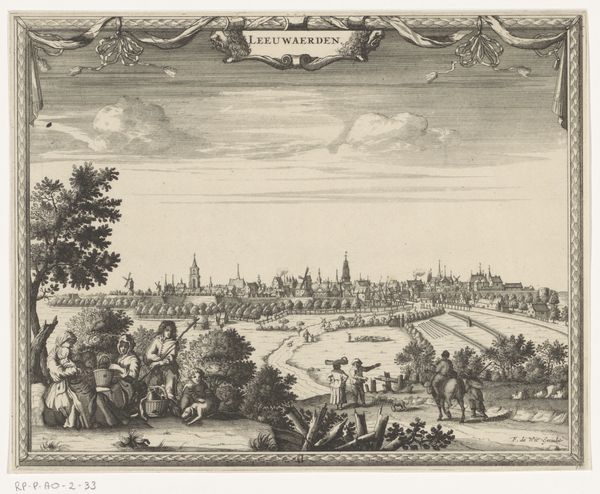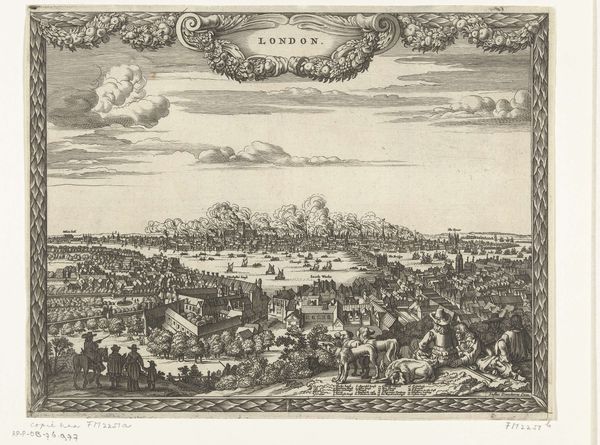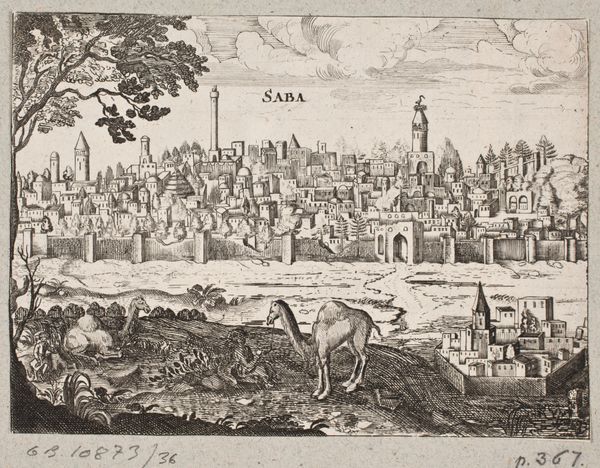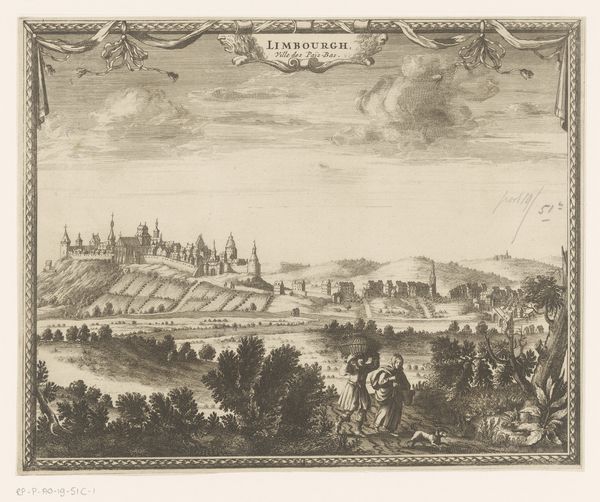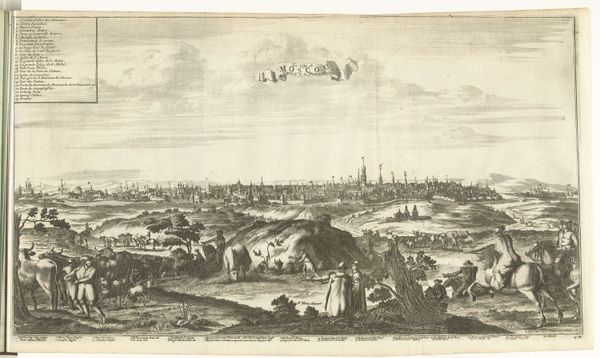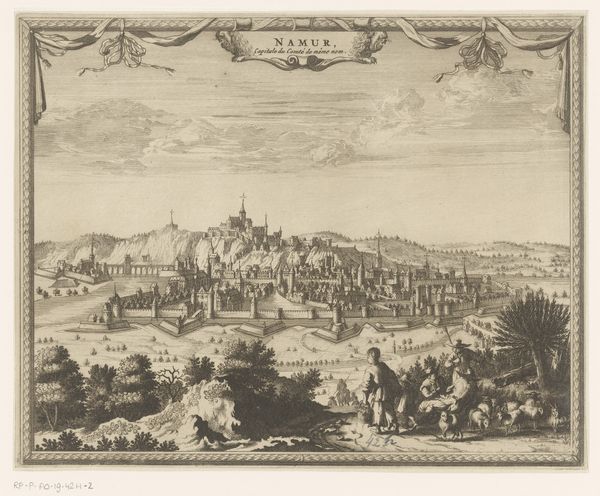
print, engraving
#
baroque
# print
#
landscape
#
cityscape
#
engraving
Dimensions: 97 mm (height) x 140 mm (width) (bladmaal)
Editor: Here we have the engraving, “'Twere'," from 1647, found in the collection of the SMK - Statens Museum for Kunst. It presents a panoramic cityscape, rendered with fine detail. There’s almost a sense of forced perspective. What stands out to you? Curator: The scene feels consciously constructed. Given the period, I’d venture that this print serves less as a record of verifiable facts than as a declaration of power, perhaps? Note how the city, encircled by imposing fortifications, dominates the landscape. Who do you imagine inhabited this space, and who commissioned the engraving? Editor: Hmm, I hadn't thought about it as a power statement. I suppose the elevated viewpoint could imply a sense of control or dominance over the city… You’re right. It does feel propagandistic, but to what end? Curator: Consider the function of prints like these during the Baroque period. Often, these images served the interests of the ruling class, communicating specific messages about their dominion, technological prowess, and ability to control not only physical space but also narratives about themselves. What purpose does such controlled imagery have now, do you think? Editor: That’s fascinating. It recontextualizes my perception completely. It feels like studying the layers of societal power embedded in what seemed, at first glance, a simple cityscape. Maybe its current purpose is as a warning—a reminder of the pervasive nature of propaganda throughout history. Curator: Precisely. By critically engaging with the social and political context of "Twere", we can start to decipher how such artwork functions as a form of rhetoric, subtly shaping perceptions of authority and belonging, which still occur in this current era. Editor: Thanks, this discussion shifted my focus, revealing the role art plays in cultural narratives. Curator: Indeed, examining art as cultural products, not just aesthetic objects, can offer crucial insight.
Comments
No comments
Be the first to comment and join the conversation on the ultimate creative platform.

